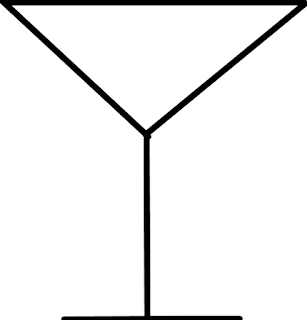The Martini is arguably the most iconic cocktail. San Francisco stakes a claim to its invention, citing a reference in an 1887 bartender’s manual. Meanwhile, the town of Martinez, California, disputes this, asserting that the drink originated there during the 1849 Gold Rush as a namesake variation. Legal battles followed but failed to resolve the dispute, and neither location’s early versions resembled the martini as we know it today.
This uncertainty has fueled the belief that the cocktail as we know it was created in New York during the 1920s. By then, the classic recipe—gin and vermouth mixed in a 2:1 ratio and garnished with an olive—had become the standard. Its popularity soared, partly because gin was easily accessible, even during Prohibition.
Over the years it has inspired admiration and literary praise. Journalist H. L. Mencken famously called it “the only American invention as perfect as the sonnet.”
Winston Churchill
James Bond
In 1964, the movie Goldfinger introduced one of James Bond’s most famous lines, ordering his “shaken, not stirred.” This iconic phrase marked a notable departure from the traditional preparation. Shaking a martini has significant effects. It creates tiny shards of ice that are difficult to strain out, increases aeration, and introduces more water through dilution.
These differences matter. The extra water dilutes the drink, while the aeration—useful in cocktails requiring syrups—makes the martini unnecessarily cloudy and dull. As the remaining ice shards melt, the drink becomes even more diluted, detracting from its intended flavor and presentation.
A properly stirred and strained martini, with its crystal-clear appearance, is a heavenly sight to behold. The best remains, unquestionably, “stirred, not shaken.” Apologies, James.
The Perfect Martini
Notice I said the best, not a “perfect” one. The so-called “Perfect Martini” is its own creation, made with gin and an equal mix of dry and sweet vermouth. Whether it lives up to its name is for you to decide.
And then, of course, there’s the garnish. The classic choice is undoubtedly the olive. But which kind? Spanish? Napa Valley? Perhaps stuffed with garlic or blue cheese? Or maybe you prefer a lemon twist instead?
How about a pickled onion?
Ah, but that’s a trick question. Add a cocktail onion, and it’s no longer a martini—it becomes a gibson.
Rodney Dangerfield
A word of caution. Your choice of olive can lead you down a slippery slope. It starts innocently enough with one olive, then perhaps two or more. Rodney Dangerfield even joked about substituting the olives for an appetizer. From there, it’s a short step to the temptation of a “dirty martini.”
While still technically a martini—and beloved by many—the addition of olive brine overwhelms the delicate balance of flavors in the classic recipe, leaving its nuanced character behind. Proceed with care!
Ernest Hemingway
Three Martini Lunch
Let’s not overlook the legendary lunch—a hallmark of an era when business, leisure, and indulgence went hand in hand. Picture the world of Mad Men, where drinking at lunch (and often in the office) was not just accepted but routine. How times have changed.
Still, after three martinis, anyone would likely agree with E.B. White, who described them as “the elixir of quietude.” Truer words were never spoken.

